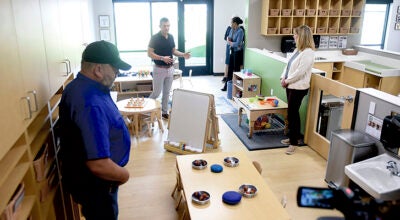Council discusses goals for 2016
Published 10:20 am Tuesday, May 3, 2016
The Austin City Council passed a motion to approve four 2016 goals focusing on the city’s social media presence, the workforce, public amenities and natural resources, and neighborhood revitalization.
City Administrator Craig Clark said the goals are a summation of what was discussed with department heads and at the council retreat.
The first goal is serving the residents of Austin with quality city services that are digitally inclusive and professional and encourage engagement with stakeholders and citizens.
Council member at-large Janet Anderson said she liked the fact the city is using social media such as Facebook and city website to show the public what they’re working on.
“That’s where more and more people are getting their information,” Anderson said.
City Clerk Ann Kasel recently posted photos of testing the stop logs on the North Main flood wall and a photo from the 2004 flood when the wall wasn’t there.
The second goal is to make Austin a leader in economic development growth while focusing on adding quality paying jobs and tax base enhancement.
Discussion around the second goal centered around having enough people to maintain the current workforce.
Council member David Hagen said there isn’t enough workforce to take care of the jobs in Austin right now and that the city needs more childcare facilities.
Mayor Tom Stiehm said the goal here is to create an environment people want to move to, but the number one problem right now is the 20 percent poverty rate in Austin.
A sub-goal is to have an incentive package ready to go when city leaders are approached by developers. The goal is to develop a fund working with Mower County and Austin Utilities to have a standing $200,000 commitment with incremental $22,222 cash contribution from each partner over three years to build the fund.
Clark added he’s been told there’s a lot of interest in the Oak Park Mall area.
The third goal is to make Austin an attractive community with public amenities and to protect natural resources to enhance the quality of life, while balancing the costs for these enhancements.
While the council didn’t have any discussion about this goal, a few sub-goals include partnering with other entities on projects that recognize parks and public spaces are important places to promote environmental stewardship.
The council would also like to make enhancements to existing attractions such as the pool, parks, playgrounds and other public spaces. Another goal is to grow the programs at the Jay C. Hormel Nature Center.
The last subgoal focuses on the development requirements to consider complete street options such as narrower roadways with sidewalks and trails.
The last goal is to make it a priority to be a community that depends on the protection of its tax base and preserving existing housing and improve livability in neighborhoods.
The main goal here is to take a windshield or walking tour and survey neighborhoods for revitalization, like the city did with the comprehensive plan.
“Take a strategic view, go through certain areas, but we can’t take the whole community on at one time,” Clark said.
Other sub-goals include creating a funding source for hazardous building demolition and repair, creating a committee to review subdivision ordinances to recommend updates or amendments and adopting the comprehensive plan update.
The council would also like to review examples of minimum housing rental property inspection and licensing program and adopt a plan which can be incorporated into the rental registration online, to enhance public safety and preserve existing housing stock.





